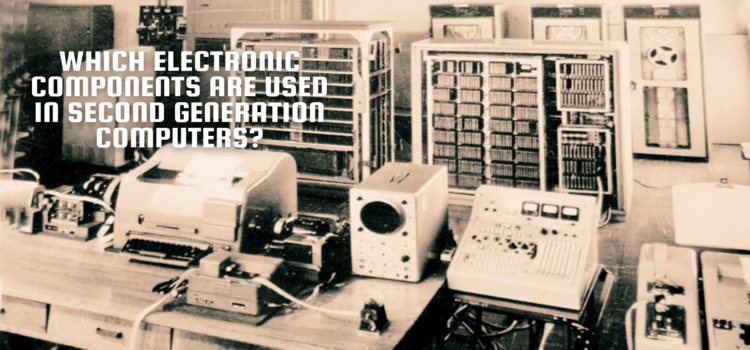Second generation computers, also referred to as transistorized computers, were developed in the late 1950s and 1960s. These machines marked a significant advancement over their predecessor, the first generation computers, by replacing vacuum tubes with smaller and more efficient electronic components called transistors. Transistors played a vital role in the functioning of second generation computers and were responsible for revolutionizing the field of computing.
Apart from the prominent use of transistors, several other electronic components were utilized in second generation computers. These components enhanced the overall reliability, speed, and storage capacity of these machines. Let's explore some of the key electronic components used during this era:
1. Transistors: As mentioned earlier, transistors were at the heart of second generation computers. These semiconductor devices replaced bulky and power-hungry vacuum tubes, drastically reducing the size and power consumption of the machines. Transistors performed tasks such as amplification, switching, and storing data, allowing for faster and more efficient computer operations.
2. Diodes: Diodes were another essential component used in second generation computers. Acting as one-way valves for electric current, diodes helped in controlling the direction of flow within the computer circuitry. They were primarily used for rectification, signal processing, and modulation purposes.
3. Magnetic Core Memory: Second generation computers introduced magnetic core memory as a major advancement in data storage technology. This memory system used small magnetic rings, called cores, to store digital information. Data was stored by altering the magnetic polarity of these cores, representing binary digits (bits). Magnetic core memory provided higher storage density, faster access times, and improved reliability compared to the earlier magnetic drum and mercury delay line memory systems.
4. Printed Circuit Boards: Second generation computers widely adopted the use of printed circuit boards (PCBs). PCBs simplified the construction and maintenance of computer systems by providing a platform for mounting and connecting various electronic components. They allowed for a compact design, efficient heat dissipation, and standardized interconnections between different parts of the computer.
5. Integrated Circuits (ICs): Towards the end of the second generation, integrated circuits started to make an appearance. ICs combined numerous electronic components, such as transistors and resistors, onto a single silicon chip. These chips revolutionized the field of microelectronics, paving the way for miniaturization, increased computational power, and the eventual development of third generation computers.
In conclusion, second generation computers heavily relied on various electronic components, including transistors, diodes, magnetic core memory, printed circuit boards, and the early beginnings of integrated circuits. These components contributed to the increased speed, reduced size, and enhanced reliability of second generation computer systems, laying the foundation for the evolution of modern computers.
